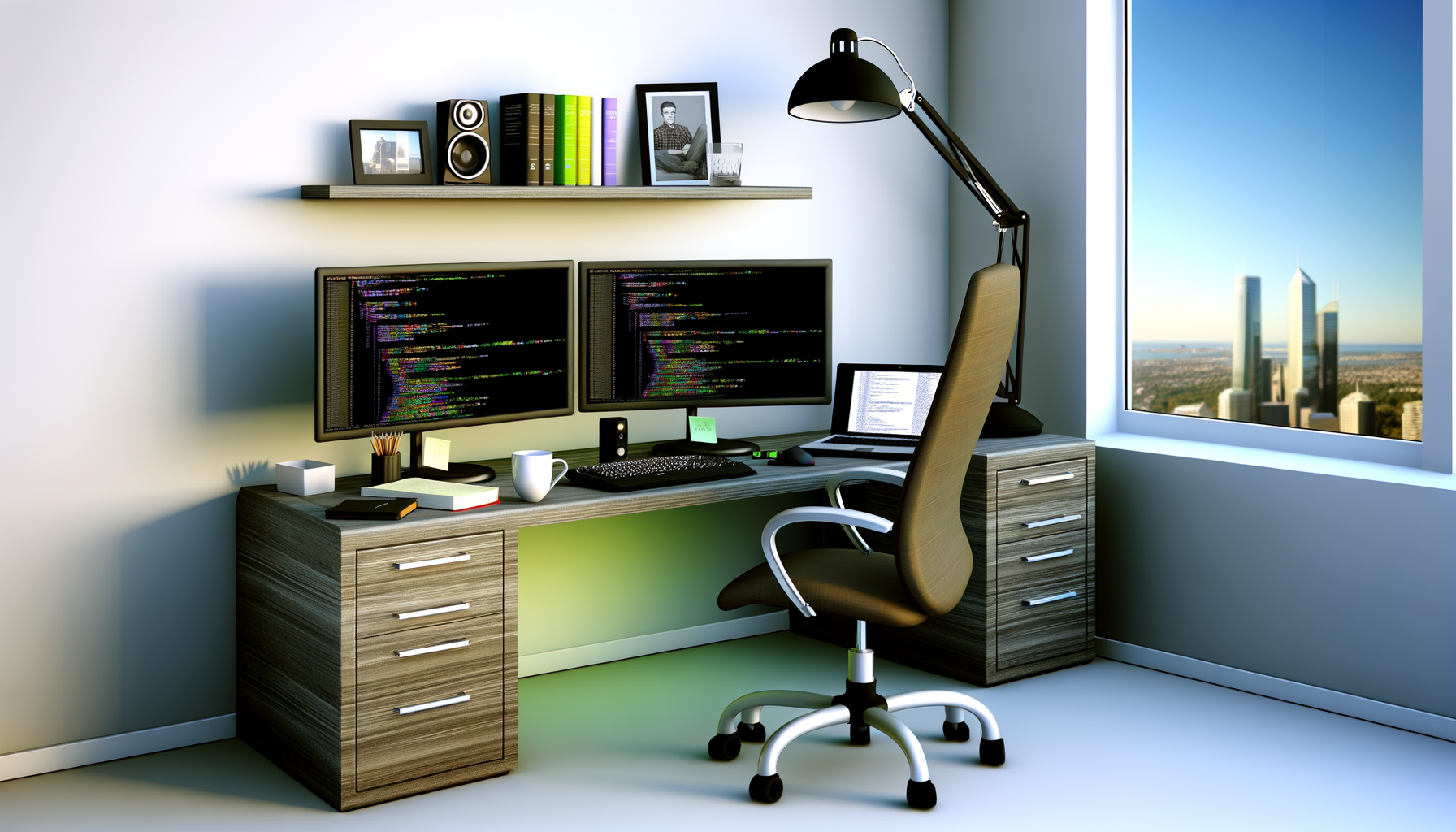
Ultimate Developer Workstation Setup Guide for 2024: Boost Your Productivity!
Ready to supercharge your coding productivity? Let’s dive into the ultimate developer workstation setup guide for 2024! Did you know that optimizing your workspace can boost your productivity by up to 20%? As a fellow developer, I’ve spent countless hours fine-tuning my setup, and I’m excited to share my insights with you. Whether you’re a seasoned pro or just starting out, this guide will help you create the perfect coding environment. Let’s get started!
Choosing the Right Hardware
Let’s talk about the heart of your development setup: the hardware. First things first, you’ll want to focus on selecting a powerful, multi-core processor. Think of it as the engine of your machine – the more cylinders, the smoother it’ll run when you’re juggling multiple tasks.
Now, onto RAM. It’s like the workspace on your desk – the more you have, the more tasks you can handle simultaneously without things getting cluttered. Determine your optimal RAM needs based on the type of development you’ll be doing. If you’re into heavy-duty tasks like running virtual machines or working with large datasets, you might want to err on the side of more RAM.
When it comes to storage, you’ve got a choice between SSDs and HDDs. SSDs are like sports cars – fast and efficient, but potentially pricier. HDDs are more like reliable family sedans – they can hold a lot and are more budget-friendly, but they’re not winning any speed races. Consider a combination of both if you can.
Lastly, let’s chat about monitors. Are you a single-monitor purist or a multi-monitor maven? There’s no right answer here – it’s all about what helps you work best. Some developers swear by the focus a single monitor brings, while others can’t imagine life without their multi-monitor setup.
Essential Software for Developers
Now that we’ve got your hardware sorted, let’s dive into the software that’ll make your life easier. First up, Integrated Development Environments (IDEs). These are like Swiss Army knives for coders – they’ve got everything you need in one package. Choose one that supports your preferred programming languages and has features that align with your workflow.
Version control systems are non-negotiable in modern development. Git is the popular kid on the block, but there are others out there. Pick one and get comfortable with it – your future self (and your teammates) will thank you.
Collaboration and project management tools are crucial, especially if you’re working in a team. Whether it’s Slack for communication, Jira for project tracking, or Trello for task management, find tools that help you stay organized and connected.
Don’t forget about performance monitoring and debugging software. These are like the mechanics of the coding world – they help you identify and fix issues before they become major problems.
Ergonomics and Workspace Design
Let’s shift gears and talk about your physical workspace. Your body will thank you for investing in an ergonomic chair and desk. Trust me, your back will appreciate it after those long coding sessions.
Pay attention to your keyboard and mouse positioning. They should be at a height and distance that allows your arms to rest comfortably at your sides. This can help prevent repetitive strain injuries.
Lighting is more important than you might think. Poor lighting can lead to eye strain and headaches. Natural light is great, but if that’s not possible, invest in good quality artificial lighting that doesn’t cause glare on your screen.
Finally, organize your workspace for efficiency. Keep frequently used items within easy reach, and try to minimize clutter. A tidy workspace can lead to a tidy mind – and cleaner code!
Customizing Your Development Environment
Now, let’s get personal. Configuring your operating system for optimal performance can make a big difference in your day-to-day work. This might involve tweaking settings, removing unnecessary startup programs, or even choosing a different OS altogether.
Consider setting up virtual machines or containers. These can be great for testing in different environments or isolating projects.
Personalizing your IDE and text editor is where you can really make your setup your own. Choose a color scheme that’s easy on your eyes, set up snippets for frequently used code, and configure your preferences just the way you like them.
Creating efficient keyboard shortcuts and macros can be a game-changer for your productivity. The less time you spend moving your hands from the keyboard to the mouse and back, the more time you can spend actually coding.
Network and Security Considerations
Last but definitely not least, let’s talk about keeping your setup connected and secure. A reliable and fast internet connection is crucial for most developers these days. If you’re working from home, it might be worth investing in a business-grade internet package.
Implementing VPN and firewall protection is a smart move, especially if you’re dealing with sensitive data or connecting to remote servers.
Securing your development environment goes beyond just having a good antivirus. It involves practices like keeping your software updated, using strong passwords, and being cautious about the tools and packages you install.
Finally, don’t neglect your backup and recovery strategies. Regular backups can save you from disaster, whether it’s a hardware failure or an accidental deletion. Remember, it’s not if something will go wrong, but when – so be prepared!
Conclusion
There you have it – the ultimate guide to setting up your developer workstation in 2024! By optimizing your hardware, software, and workspace, you’ll be well on your way to becoming a coding powerhouse. Remember, the perfect setup is personal, so don’t be afraid to experiment and find what works best for you. Now, it’s time to put these tips into action and create your dream coding environment. Happy coding!